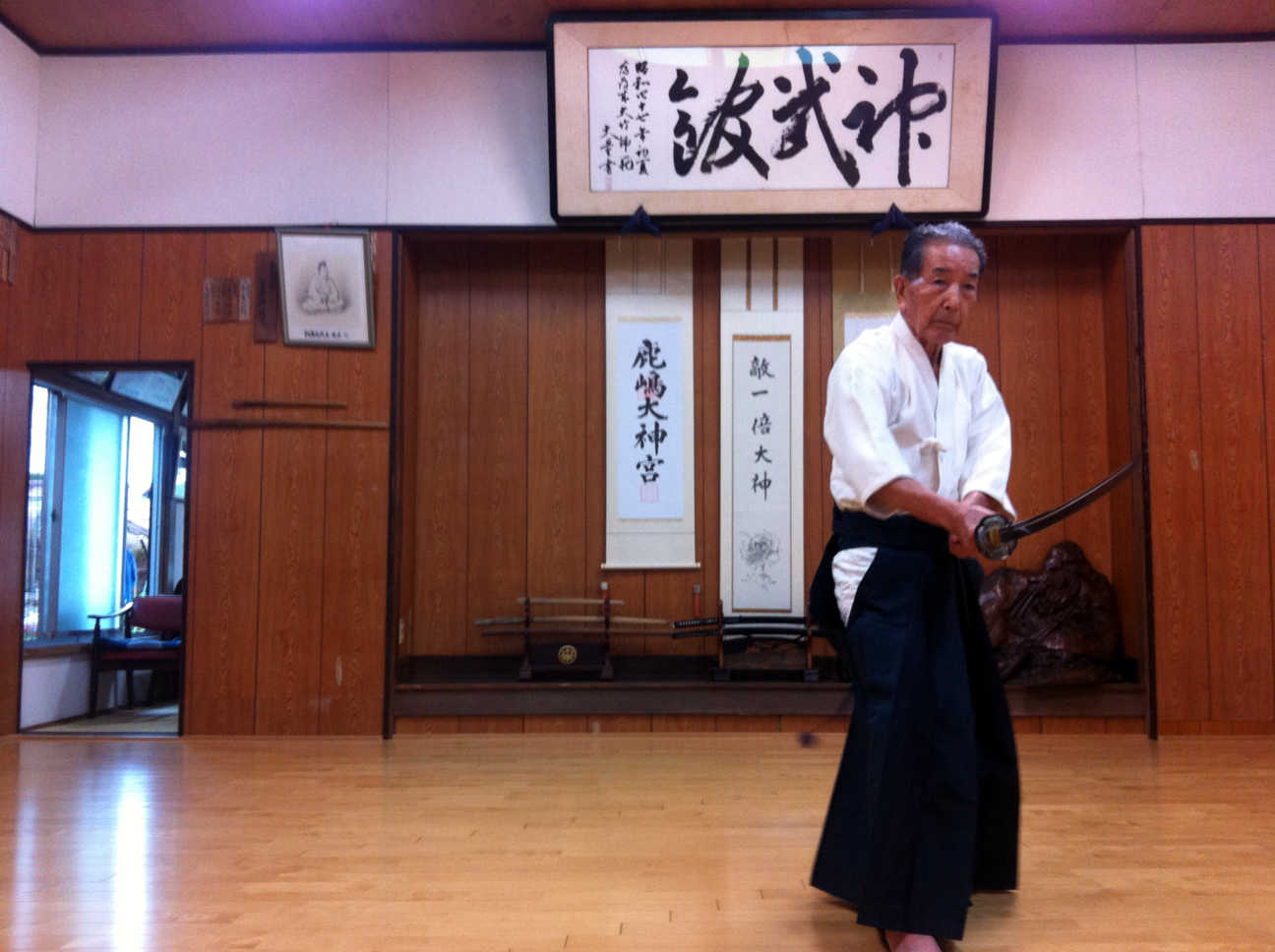Intangible Cultural Asset Tenshinshō-den Katori Shintō-ryū The traditionKatori Shintō-ryū is a comprehensive martial art comprised of martial training, strategic study and personal development. Training methods including the martial arts of kenjutsu(swordsmanship), iaijutsu (sword drawing), bōjutsu (staff techniques), naginatajutsu (halberd techniques), ryōtōjutsu (twin swords), kodachijutsu (short sword techniques), sōjutsu (spearsmanship), jujutsu (unarmed combat) and Shurikenjutsu (blade-throwing art), as well as strategy including gunbaihō (troop movement and positioning), chikujohō (fortifications), jin’ei (management), noroshi (smoke signaling), ninjutsu (espionage), and tenmon chimon fūsui based on yin/yang and five element theory, as well as advanced study from strategy to the way of peace have been transmitted through the generations to the present day. Joining the traditionThose interested in joining the tradition must even today sign an oath to the deities of the Katori Shrine. This blood oath is a tradition that has been transmitted for generations, and ensures aspirants understand the correct attitude with which they are expected to approach entry to and study within the tradition. Applicants pledge to uphold the following rules: Respectful Oath to the Supreme Deities Once completed, the applicant is recognized as a member of the tradition, with the pledge serving to teach them the correct approach toward the tradition, headmaster and master instructors, and provide the correct approach toward beginning the learning process. Learning processStudents are taught kata (pre-arranged routines) that are studied and practiced together with more senior practitioners under the supervision of their teacher. Training consists of the practice of prearranged forms that embody the art’s quintessence, and enable students to gradually embody the art’s technical, theoretical and philosophical approach. The first kata learnt are omote no tachi (swordsmanship: 4 kata), omote iaijutsu (sword drawing: 6 kata), tachiai battōjutsu (standing sword drawing: 5 kata), omote no bōjutsu (staff techniques: 6 kata), and omote no naginata (halberd techniques: 4 kata).    Students practice these kata over many months and years, and are introduced to a wide range of instruction as well as being awarded scrolls (mokuroku, menkyo, and gokui kaiden) in line with their development. |
|
